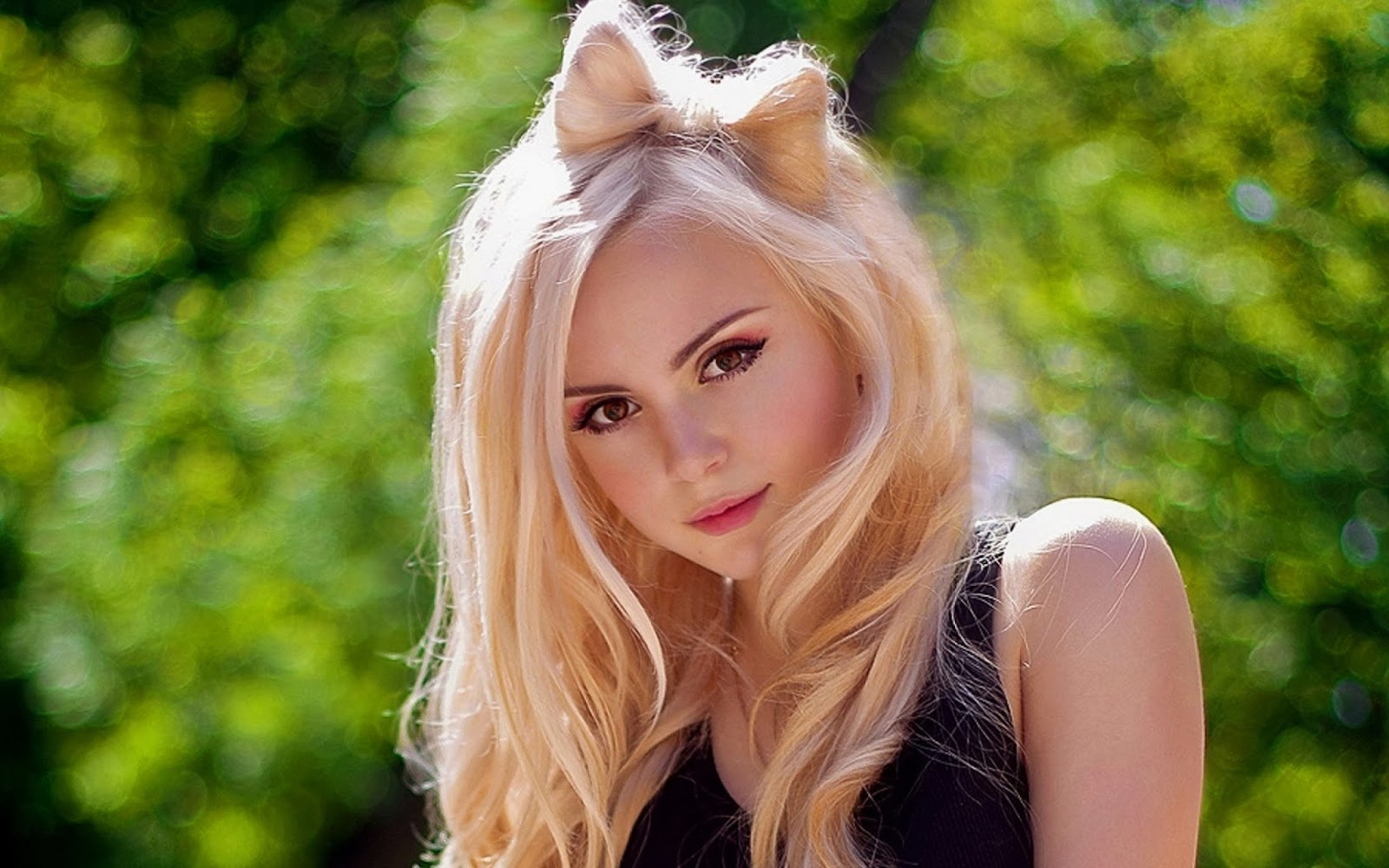The concept of the "cute blonde girl" has captivated many cultures worldwide, symbolizing charm, youthfulness, and an often idealized version of femininity. This phenomenon is not just a trend; it reflects deeper societal values and perceptions about beauty, personality, and cultural stereotypes. In this article, we will delve into the various aspects of this topic, exploring what makes the cute blonde girl so appealing and how this archetype has evolved over time.
From the iconic blonde bombshells of the past to modern representations in media and fashion, the cute blonde girl has influenced social norms and personal identities. By examining this topic, we aim to understand the psychological and cultural implications of this stereotype and how it affects both individuals and society as a whole.
Join us as we explore the world of cute blonde girls, their representation in popular culture, and the underlying themes that contribute to their enduring appeal. Whether you are curious about the psychology behind this phenomenon or want to know more about contemporary blonde icons, this comprehensive guide will provide insights and information that are both fascinating and informative.
Table of Contents
- Biography of Cute Blonde Girls
- Cultural Significance of Blondes
- Media Representation of Cute Blonde Girls
- Psychological Aspects of Blonde Stereotypes
- Modern Representations of Blondes
- Famous Blonde Icons
- Challenges Faced by Blondes
- Conclusion
Biography of Cute Blonde Girls
The term "cute blonde girl" often refers to a particular stereotype in society that combines physical appearance with personality traits. Throughout history, blonde hair has been associated with various attributes, including innocence, beauty, and charm.
While the archetype can vary widely, here are some common traits often attributed to cute blonde girls:
- Youthfulness
- Playfulness
- Attractiveness
- Social charm
To better understand this phenomenon, let’s take a look at a few notable blonde figures in pop culture.
Data and Personal Information
| Name | Birthdate | Profession | Notable Works |
|---|---|---|---|
| Marilyn Monroe | June 1, 1926 | Actress, Model | The Seven Year Itch, Gentlemen Prefer Blondes |
| Brigitte Bardot | September 28, 1934 | Actress, Singer | And God Created Woman, Viva Maria! |
| Gwen Stefani | October 3, 1969 | Singer, Fashion Designer | No Doubt, solo albums |
Cultural Significance of Blondes
Blonde hair has held a significant place in various cultures. In Western societies, it is often seen as a symbol of beauty and desirability. The portrayal of blonde women as the "ideal" can be traced back to ancient Greek and Roman cultures, which celebrated light hair as an emblem of purity and virtue.
Moreover, the cultural impact of blonde women extends into literature, art, and film. Iconic characters such as Cinderella and Barbie have contributed to the idealization of blonde femininity, reinforcing societal norms about beauty.
Media Representation of Cute Blonde Girls
In modern media, the representation of cute blonde girls has evolved significantly. From film and television to social media influencers, blonde women often occupy central roles that highlight their beauty and charm.
However, this representation can be a double-edged sword. While it celebrates certain attributes, it can also perpetuate stereotypes that limit how women are viewed and treated in society.
Psychological Aspects of Blonde Stereotypes
The psychology behind the cute blonde girl stereotype is complex. Research indicates that people often associate blonde hair with specific personality traits, such as being more approachable or less serious than their darker-haired counterparts.
These associations can lead to biases in both personal and professional settings, impacting opportunities and perceptions of competence.
Modern Representations of Blondes
Today, the cute blonde girl archetype continues to thrive in popular culture. Social media platforms like Instagram and TikTok have given rise to a new generation of blonde influencers who redefine what it means to be a cute blonde girl.
These influencers often challenge traditional stereotypes by showcasing a broader range of personalities and lifestyles, proving that the cute blonde girl can be multifaceted and diverse.
Famous Blonde Icons
Throughout history, several blonde women have made significant contributions to culture and society. Here are a few notable icons:
- Marilyn Monroe: An enduring symbol of femininity and beauty.
- Lady Gaga: A pop icon who has challenged norms through her music and fashion.
- Taylor Swift: A successful artist whose influence extends beyond music into social issues.
Challenges Faced by Blondes
Despite the glamorous image often associated with cute blonde girls, they can face unique challenges. Stereotypes can lead to unrealistic expectations, and many blonde women report feeling pressure to conform to societal standards.
Additionally, they may encounter discrimination based on their appearance, as biases can lead to assumptions about their intelligence or capabilities.
Conclusion
In conclusion, the concept of the cute blonde girl is a multifaceted topic that encompasses cultural, psychological, and social dimensions. While they are often celebrated for their charm and beauty, it is essential to recognize the complexities and challenges associated with this stereotype.
We invite you to share your thoughts on this topic in the comments below. If you enjoyed this article, consider sharing it with friends or reading more on our site!
Penutup
Thank you for exploring the fascinating world of cute blonde girls with us. We hope you found this article informative and engaging. Don't hesitate to visit us again for more insightful content!
Article Recommendations
- East Multnomah Soil And Water Conservation District
- Germania Insurance Amphitheater
- Rodney Alcala On Dating Game Video


